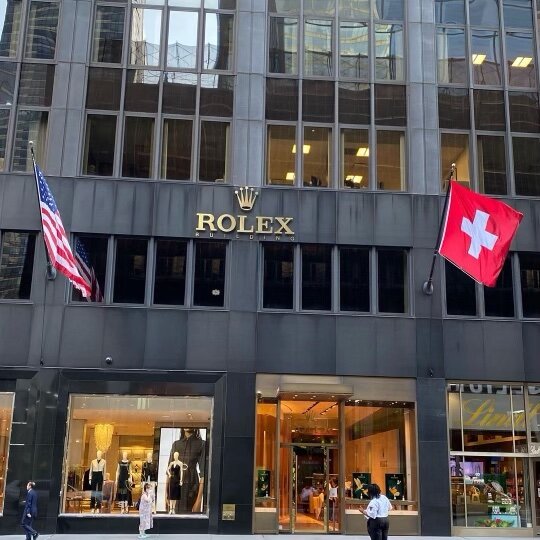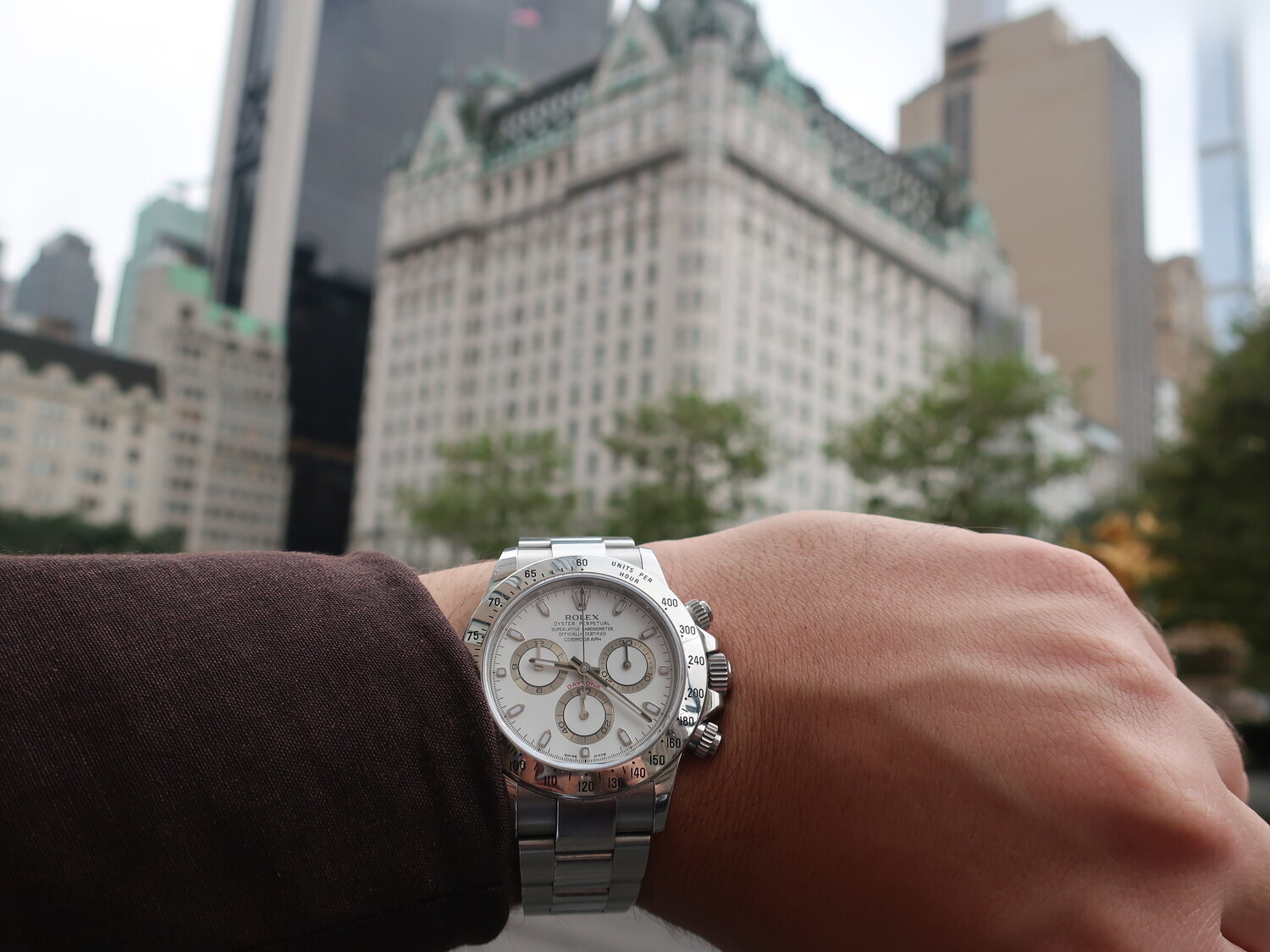We Finally Got a Response From Rolex On the Supply-Demand Issue, and Well?
It’s a very Rolex response. Before I continue, you can read the statement below - provided by Rolex SA to Yahoo Business:
"The scarcity of our products is not a strategy on our part. Our current production cannot meet the existing demand in an exhaustive way, at least not without reducing the quality of our watches – something we refuse to do as the quality of our products must never be compromised. This level of excellence requires time, and as we have always done, we will continue to take the necessary time to ensure that all our watches not only comply with our standards of excellence, but also meet the expectations of our customers in terms of quality, reliability and robustness. Rolex does not compromise on what it takes to produce exceptional watches.
All Rolex watches are developed and produced in-house at our four sites in Switzerland. They are assembled by hand, with extreme care, to meet the brand's unique and high-quality standards of quality, performance and aesthetics. Understandably, this naturally restricts our production capacities – which we continue to increase as much as possible and always according to our quality criteria.
Finally, it should be noted that Rolex watches are available exclusively from official retailers, who independently manage the allocation of watches to customers."
Right… So… Let’s dive in to that response.
Before we get into the weeds, I want to preface this article by saying that this is my opinion on the matter. I have gathered a few thoughts around this response - considering an industry response at all from Rolex is generally rare.
I also want to say that I understand enthusiasts frustrations around Rolex in general. I’ve seen both positive and negative responses to the statement. But generally, they have been negative. Without trying to sound too cynical, to many enthusiasts, Rolex’s response reads like this:
“It’s not our fault too many people want our rare product. For us to make the product less rare, means we have to compromise on quality - of which we are the best. Did we mention we are the best? We don’t compromise on being the best.
We can only do so much and won’t apologize for it.
Also we don’t sell Rolexes our retailers do. Blame them.”
Courtesy of Rolex Magazine
That being said, there are three things that I’ve noticed around the entire Rolex “Supply” situation.
1. Rolex doesn’t care if there is a “shortage” of watches, because they don’t determine the demand.
What I mean by this is that Rolex is going to make a finite amount of watches each year. They are fine with whatever business that amount of models drums up. The model production may vary year to year, but they are definitely NOT unaware of how much demand there is for steel Rolex models among enthusiasts - and they still won’t produce enough. Could Rolex make more money by producing more stock of specific models? Absolutely. Do they necessarily need to or want to? No.
While the “We don’t want to compromise our quality to produce more” feels like a cop-out, it really isn’t. They have a certain capacity to make watches - they don’t seem interested in expanding that capacity to meet that demand (at the moment anyway). That’s it. Is that fair? Well, it’s not unfair. However, especially for those who simply want to walk into a retailer and buy the watch they want - It’s simply exhausting.
2. The major increases on the grey market really don’t affect the Rolex brand as much as people think it does. Which explains a good portion of their predictable response.
The last five to six years have been a roller coaster for Rolex prices. With increases anywhere from 30% up to 200% outside of the Rolex Authorized Dealers (AD’s), many prominent watch journals have made claims that this cheapens the brand. I’m about to disagree. Now, hear me out - from the brand’s perspective. Pretend with me, if you will, that you run Rolex, and step out of the “enthusiast” role for just a second.
Let’s take the steel GMT Master II “Pepsi” (ref. BLRO). Retail on this watch is just north of $9,500, yet gray market prices have the watch selling at over $35,000 (and up) on many sites - and it’s not just listed at that price, it’s actually consistently selling there. This gives the appearance that, without the access, you’ll have to pay upwards of $40,000 for the Pepsi when the value is less than $10,000. However, Rolex, who remember has a finite production line that they seem to be fine maintaining, has made their money on the watch - however much that is. Rolex operates its business as usual, while moving responsibility to who they claim is the real culprits of this perception, the AD’s. And ironically, they’re not entirely wrong - though context is needed.
Rolex’s limited supply has put their AD’s in an awkward position of selling at a premium (which they shouldn’t, and technically aren’t allowed to do) to maintain cash flow or allocate desirable models to clients they want to keep long term. That potential future business outweighs the direct current business pretty heavily. If they can use gold watches to entice a buyer towards a steel watch, they will. Which simply leads to empty shelves, or worse “Display Model Only” signs.
This, in turn, causes first-time enthusiasts excited about purchasing their first Rolex to get hit with the “We don’t have that model in stock, we will put you on our list if you’d like” line. What they don’t mention is the list is mostly non-existent outside of major clientele, and the new enthusiast never gets “the call”. This turns off the new enthusiast to Rolex and drives them towards something else. Don’t mix that up with “cheapening” however - since the watches will still remain sold out (almost always) before they hit the shelves. Long term, this may be a problem for Rolex. Currently it’s really not. And that’s simply exhausting.
3. Nothing will change unless people stop buying Rolex Watches.
And this is the sad reality. With a healthy - well, alright - thriving Grey market, Rolex models at retail will continue to be the most desirable version of Rolex models. Since the healthiest grey market is in the steel segment, well… you see where this is going.
This deters a lot of enthusiasts. The whole ordeal becomes about what I like to call the “Access Status” and less about the watch. When a $10,000 watch is selling at $40,000 consistently, owning one either means you have the ludicrous “access” to purchase one at retail, or you have the wealth to not care about the premium you’re paying for the watch. Sure you might like the watch, but what’s entailed to actually get it is the real gig. Either way, simply owning and wearing any steel Rolex these days is a serious flex.
So will that ever get fixed? Not unless people stop buying Rolexes.
I get asked a lot if I think there is a Rolex “bubble” and realistically, I don’t. At least not one in the short term. The reality is, as long as people are buying at any kind of premium on the grey market, people will still buy Rolex in droves. Further, Rolex will continue to not really care until they stop selling out of their retail priced models - and that won’t happen in the near future. Which, is simply exhausting.
If you find a common theme here, I’ve decided that the Rolex supply-and-demand issue, at is core, is simply exhausting. It’s disappointing if you’re an enthusiast looking to buy a Rolex, it’s confusing if you’re a regular Joe who saved some money and walked into a boutique, and it’s validating if you’re part of the crowd that has the access to buy the watch at retail or the cash to buy one on the grey market. It’s difficult to compare what’s happening with Rolex to anything else, because it just seems so backwards.
“wait so you’re saying if I walk into a Rolex to buy a $10,000 watch, I can’t? If I want to give them $10,000 for a watch, they won’t take it?”
Essentially, yes that’s what I’m saying. And that’s confusing, and frustrating, and sometimes a little sad. The idea that a watch enthusiast needs a crash-course in the entire market to understand why they literally can’t buy the most popular watches in the world, is exhausting. The fact that this statement from Rolex is so Rolex-y that nobody will be surprised by it, is exhausting. The fact that employees of any Rolex AD have to constantly say “we don’t currently have that model”, is exhausting. And the fact that I’m well over 1500 words into this feature, and could still write 1500 more and barely scratch the surface of how Rolex’s supply and demand “problems” affect the enthusiast market is… Unsurprising.
And I think that’s what makes this whole response so wild. If you were to sit down for days, weeks, months, you couldn’t craft a more expected response. And it’s hard to blame Rolex for it. It was a lot of words for essentially “it is what it is”. And that’s leaving a lot of enthusiasts amused, but also frustrated because as much as some of us got excited when we read “Rolex finally responded” we simply got the response we really expected all along. So is that the brands fault? Probably not. But it doesn’t make the ordeal any less… well? Exhausting.







